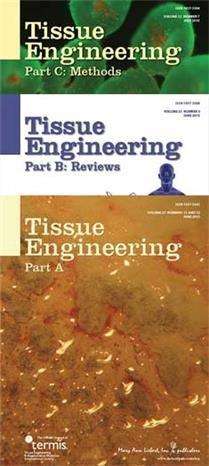Biomaterial scaffold implanted after spinal cord injury promotes nerve regeneration

Researchers from the Mayo Clinic demonstrated that implantation of a biomaterial scaffold designed to bridge the lesion caused by a spinal cord injury creates a tissue environment more favorable for nerve regeneration. The desirable tissue reaction to the implant did not appear to depend on whether the scaffold was seeded with tissue-specific cells, according to the study published in Tissue Engineering, Part A.
Anthony Windebank, MD and coauthors, Mayo Clinic, Rochester, MN, evaluated the response of nerve tissue over time to an implanted biomaterial scaffold, with or without Schwann cells, at the site of a full transection spinal cord injury in rats. In the article "Positively Charged Oligo[Poly(Ethylene Glycol) Fumarate] Scaffold Implantation Results in a Permissive Lesion Environment after Spinal Cord Injury in Rat," the authors report reduced scarring, cyst formation, and deposition of debris and protein complexes that can inhibit nerve regeneration. Seeding of Schwann cells in the scaffold channels did not have a significant effect on the lesion environment. Future research to discover therapeutic agents able to block the fibrotic response to these scaffolds could improve their ability to bridge spinal cord lesions.
"In their study of spinal cord transection injury in rats, Hakim et al. discovered that bare scaffold implantation—but not implantation of scaffold plus Schwann cells—temporarily enabled a 'regeneration permissive' environment, in which immediate scarring of the spinal cord was forestalled," says Peter C. Johnson, MD, Vice President, Research and Development and Medical Affairs, Vancive Medical Technologies and President and CEO, Scintellix, LLC, Raleigh, NC. "While scaffold fibrosis ultimately ensued, the notion that proper scaffold design alone could provide sufficient time for axonal growth across spinal cord gaps has reemerged as an interesting target of study."
More information: The article is available free on the Tissue Engineering website until August 9, 2015.















